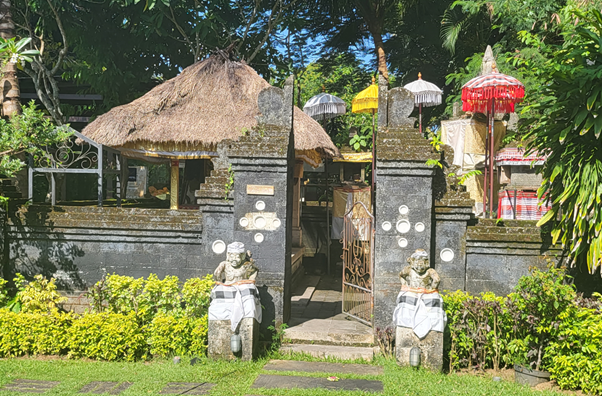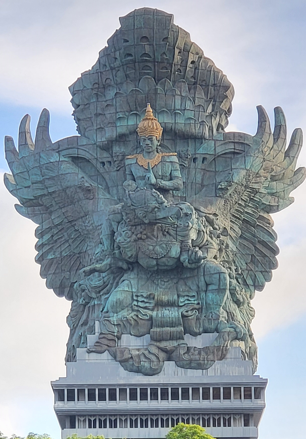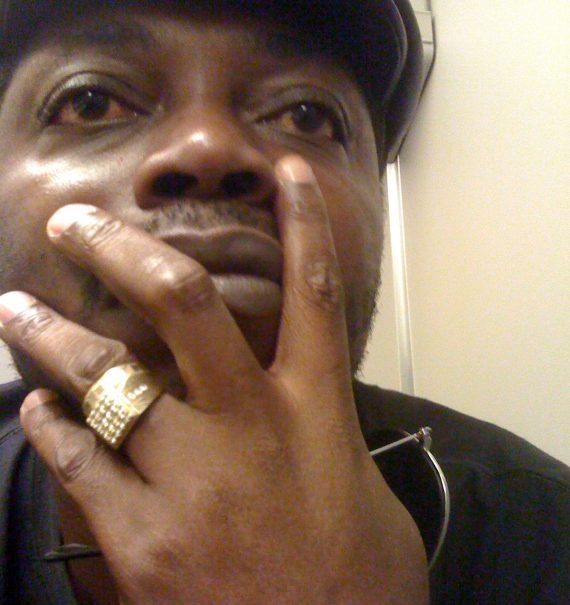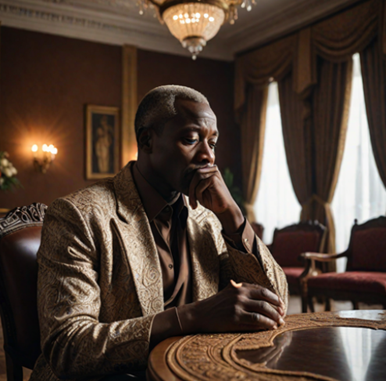Bali, City of the gods

Elegushi is a community at the heart of Lekki with the all-white painted Oba’s palace situated off the Expressway on a back road. Standing unobtrusively next to the palace is a shrine which, on the majority of days, goes unnoticed to passer byes in the hustle and bustle of life on the peninsula. For me, that was to change.
However, before going into that story, the words of Joash, Gideon’s father in the Bible, is worthy to be referenced here. In response to the people’s calling that he should present Gideon to be killed for destroying the altar of Baal, he had offered the wise counsel to the men of the city – “Will ye plead for Baal? will ye save him? he that will plead for him, let him be put to death whilst it is yet morning: if he be a god, let him plead for himself, because one hath cast down his altar.” With those words, the men of Ophrah were assuaged and Gideon became known as Jerubbaal. Let’s keep that story at heart for now as we will come back to it later but now, we get back to Elegushi.
I had ventured out of my abode at about 1am in the wee hours of the morning. Despite having driven on the road many times previously what I saw that day was unexpected. All over the palace grounds and around the shrine was a sea of heads, all dressed in white. Men and Women, of different ages were there and I had never seen such an assembly of people at such hour of the day previously. I was confused and very scared. I have heard of ritual practices and how strangers are the best offerings for such. I was well aware that I was a stranger on Elegushi land and not the son of the soil, as we say in Ibadan, so my fear was well justified.
As with many of us, it had been wired into my subconscious that traditional religion is fetish and an anathema to the Christian faith that I profess. As I drove through the crowd, I was trembling with fear, ensured my windows were wound up, the car doors locked and I was ready, at the slightest hint of danger, to press down forcefully on the accelerator to escape. Of course, nothing untoward happened to me, so my fears were unfounded.
Fast forward to sometimes recently, I had hailed a Grab cab and was seated comfortably while watching through the windows as we weaved our way out of Nosa Dua, Bali. At the point where Jalan Raya Nusa Dua Selatan becomes Jalan Srikandi stands the Puser Temple of Lan Village (Pura Puser Desa Lan. Bale Agung). It was early evening, and the place was swarming with humanity, all dressed in white from head to toe. It was a reminder of the scene I experienced at Elegushi, the only difference being the skin colour of the worshippers. I estimated there must be at least more than a hundred worshippers, male and female gathered at that place.
The driver slowed to a crawl as we passed the adherent and watched them from the comfort of the car. This time, I was neither confused nor afraid, yet nothing about me had changed apart from the fact that I was in Bali, the city of the gods.

There are plenty of gods in Balinese culture with more than 10,000 temples dedicated to their worship. Of these many gods, being mainly Hindus, the majority of Balinese worship one of the three major ones – Brahma, Shiva and Vishnu
Paul’s sermon to the Athenians on Mars’ hill could well have been delivered in Bali without any loss of content or effect. There is simply a god to everything in Bali and they are so pervasive everywhere that you can’t miss them. On the streets, there are little flower offerings placed daily, in the malls, restaurants and offices, and the shrines come in various sizes as suitable to the need of the worshippers. A visitor to the island would have to be blindfolded and led around in order not to see any of these.

A few days earlier, we had visited the Discovery Mall, whose backyard is the Pacific Ocean. While standing on the stone embarkments, raised as the first line of defense against Tsunami, a strange act unfolded in my presence. A beautiful Balinese lady had walked towards where I stood, knelt down and carefully placed the bowl in her hands on the rocks. She picked a content from the bowl, took it in a circular motion around her head and returned it into the bowl, all the while muttering to herself. That done, she turned and went back to where she came from, as if nothing had happened. This happened in broad daylight. Looking around, I was the only one that felt something was amiss, no one else gave as much as a fuss to what she did.
As I took in what I just saw, my childhood memories came flashing. I remembered coming across sacrifices at different Orita’s as I went through the back alleys from our house to places like Òjé, Èṣù Àwẹ̀lé, Oríta Aperin,Odínjó, and to school. You couldn’t have grown up in Ibadan without having come across such. There were offerings to the gods, or sacrifices placed in brown or black earthenware dishes usually made up of ẹ̀kọ, a couple of boiled eggs, coins in some cases and a generous dose of palm oil poured all over the contents. I cannot recollect having seen anyone placing them there as I came to see at the Discovery mall. They were usually placed under the cover of darkness when no one could identify the person. This is not the case in Bali.
When it comes to gods, based on the indoctrination we received from the Europeans, we are made to believe that they are evil, Professor Sophie Oluwole, before the crude hands of death snatched her away, was doing a yeoman’s job to reverse this indoctrination, bringing an understanding to the Yoruba’s concept of gods and Olódùmarè (). One can only hope that someday we will get to embrace what we had that is jealously being coveted by others.
As it is, what we fail to embrace, others are taking from us. Bahia, Brazil, Trinidad and Grinada and some other clans in North America are running ahead with our Òrìṣà. If we don’t do something now, we will be looking up to these nations in years to come to understand our culture. This will be a repeat of our palm oil experience where we are now looking up to Malaysia for development and growth in that sphere despite having given that country her first seeds of palm kernel in 1870.
Growing up in Ibadan, at Èṣù Àwẹ̀lé, there was a shrine dedicated to Èṣù where the adherents offer sacrifices and pour palm oil as libation over the stone. This was just one of many. In the Ogbelaka area of Benin city, almost every house had a shrine in front of it. It was common knowledge that the Bini people upped-the-ante when it came to traditional worshipping. These days, all these shrines are n where to be seen. Even where they exist, they are probably covered up in someone’s bedroom or backyard. Our society castigates anyone having anything to do with them, idolatry is a term used for such.
But the converse is the case in Bali. Here, even international hotel brands have embraced the worship. Why won’t they? When a people embrace their culture, others will have no cause than to follow suit. Standing boldly at the entrance and by the pool side of Novotel, are shrines. Yet this is a member of the prestigious Accor brand. This is akin to having Sheraton in Lagos or Transcorp Hilton in Abuja having a big shrine of Ògún or Amadiora?

‘Impossicant’, as a friend is won’t to say. Our Pastors, who know the Bible more than the Pope, and the Imams, who recite the Qur’an more than the Imam of the Masjid al Nabawi, would be at the front of the Vanguard to pull such down. Remove this abomination that causes desolation will be the chorus while there will be upheaval in all social media by even those so-called influencers who have never listened to a single odù ifá and know next-to-nothing about traditional worship. Everyone criticizing and speaking out of complete ignorance.
Perhaps, it is apt that we allow the wisdom of Joash prevail here and instead of Jerubbaal we should have JeruGod. And this will not be the first, it was exactly what Elijah did on Mount Carmel, as we are told. He summoned out the God of Abraham, Isaac and Israel but instead of killing the prophets of Baal, let’s have God kill them himself. When this happens, it will be a greater ministration by God against such, if truly it is idolatry.
Of course, we can’t profess it is idolatry as we don’t know that much, many of us have not taken the patience to understand what it entails but rather choosing to live by hearsays and not by understanding. Perhaps, if we understand what is involved in the traditional religious practices, we can judge clearly if doing away with them is still the right way to go or not. Taking some time to get educated by listening to the voices of Sophie Oluwole (as she expounds traditional religion to us) and Yẹmí Ẹlẹ̀buìbọn, amongst others. is an imperative towards a better understanding of the belief .

As it is, when it comes to shrines, Bali remains unrepentant. Despite being in the country that has the largest Muslim population in the world, the Balinese are not doing away with their belief system soon. As if to emphasize this, in 2018, Joko Widodo (the Indonesian President) opened the mother of them all, an edifice named the Garuda Wisnu Kencana (GWK). GWK stands atop a hill and has a commanding view of the entire Bali Island. North, South, East and West, GWK towers over everything and can be seen from everywhere. GWK Is the tallest statue of a Hindu deity anywhere in the world and the tallest statue in Indonesia (standing at 400ft high). The statue is inspired by an event in Hinduism about Garuda’s (a Hindu demi-god) search for Amrita, the elixir of life. It is a culmination of 28 years’ work and $100m in project spend,
There is no better emphatic statement anywhere else than the GWK in Bali. It seems to proclaim to anyone who cares to listen, Bali is for the gods.











